1.
Introduction
Special functions are important in the study of real analysis, geometry, functional analysis, physics and differential equations. The Mittag-Leffler function is one of them and plays a vital role in the study of fractional analysis. It is actually a generalization of the exponential function with the help of the gamma function. The role of this function in fractional differential equations is equally as important as the role of the exponential function in the study of differential equations. The Mittag-Leffler function is also used to define fractional integral operators of different types, which are further utilized in solving problems in diverse fields of science and engineering. In this paper, we are interested in producing fractional integral inequalities for fractional integrals containing a generalized extended Mittag-Leffler function.
Fractional integrals (FIs) are very useful in the advancement of fractional inequalities. A large number of classical inequalities (such as Hadamard [1], Chebyshev [2], Grüss [3], Ostrowski [4] and Pólya-Szegö [5] inequalities etc.) exist in literature for several kinds of FIs. For example, Sarikaya and Yildirim [6] derived Hadamard type inequalities for Riemann-Liouville FIs. Almutairi and Kılıçman [7] gave the Hadamard inequality and related integral inequalities for Katugampola type FIs. Adil et al. [8] established Hadamard type inequalities for conformable FIs. Belarbi and Dahmani [9] proved the Chebyshev type inequalities for Riemann-Liouville integrals. Habib et al. [10] established Chebyshev type integral inequalities for generalized k-fractional conformable integrals. Set et al. [11] gave Chebyshev type inequalities for generalized FIs involving a Mittag-Leffler function. Tariboon et al. [12] derived Grüss type integral inequalities for Riemann-Liouville integrals. Mubeen and Iqbal [13] established Grüss type integral inequalities for generalized Riemann-Liouville (k,r)-integrals. Habib et al. [14] gave Grüss type integral inequalities for generalized (k,s)-conformable integrals. Basci and Baleanu [15] derived Ostrowski type inequalities for ψ-Hilfer FIs. Gürbüz et al. [16] gave Ostrowski type inequalities for Katugampola FIs. Kwun et al. [17] established Ostrowski type inequalities for generalized Riemann-Liouville k-FIs. They also gave the error bounds of the Hadamard inequality. Ntouyas et al. [18] derived Pólya-Szegö and Chebyshev type inequalities for Riemann-Liouville FIs. Rashid et al. [19] proved Pólya-Szegö and Chebyshev type inequalities via generalized k-FIs. Du et al. [20] derived Bullen-type inequalities via generalized fractional integrals.
With motivation from the above articles, we intend to produce integral inequalities by applying a generalized convexity given in Definition 2.2 and utilizing fractional integrals given in Eqs (2.1) and (2.2). In the next section, preliminary definitions are given which will contribute in establishing the results of this paper.
2.
Preliminaries
Recently, Zhang et al. [21] established Pólya-Szegö and Chebyshev type inequalities via generalized k-FIs involving an extended Mittag-Leffler function. In the following we give the definition of generalized k-FIs directly linked with definitions of many well-known FIs.
Definition 2.1. Generalized k-FIs: [21] Let U be a positive and integrable function and V be a differentiable and strictly increasing function such that U,V:[η,ζ]→R with 0<η<ζ. Also let φ,ρ,ϑ,r,Ψ∈C,ς,ϵ,Υ≥0 with k>0 and 0<μ≤ϵ+ς. Then for σ∈[η,ζ],
and
are called generalized k-FIs involving the following Mittag-Leffler function:
Remark 2.1. The FIs given in Eqs (2.1) and (2.2) represent several well-known FIs which already exist in the literature. For example, for k=1, the FIs defined in [22] are achieved. For k=1 and V(λ)=λ, the FIs defined in [23] are achieved. For k=1, V(λ)=λ and Υ=0, the FIs defined in [24] are achieved. For k=1, V(λ)=λ and ϵ=ϑ=1, the FIs defined in [25] are achieved. For k=1, V(λ)=λ, Υ=0 and ϵ=ϑ=1, the FIs defined in [26] are achieved. For k=1, V(λ)=λ, Υ=0 and μ=ϵ=ϑ=1, the FIs defined in [27] are achieved. For k=1, V(λ)=λΨΨ, Ψ>0 and ϑ=Υ=0, the FIs defined in [28] are achieved. For k=1, V(λ)=lnλ and ϑ=Υ=0, the FIs defined in [29] are achieved. For V(λ)=λΨ+1Ψ+1 and ϑ=Υ=0, the FIs defined in [30] are achieved. For k=1, V(λ)=λΨ+ΦΨ+Φ and ϑ=Υ=0, the FIs defined in [31] are achieved. For V(λ)=(λ−η)ΨΨ, Ψ>0 in Eq (2.1) and V(λ)=−(ζ−λ)ΨΨ, Ψ>0 in Eq (2.2) with ϑ=Υ=0, the FIs defined in [10] are achieved. For V(λ)=(λ−η)ΨΨ, Ψ>0 in Eq (2.1) and V(λ)=−(ζ−λ)ΨΨ, Ψ>0 in Eq (2.2) with k=1 and ϑ=Υ=0, the FIs defined in [32] are achieved. For ϑ=Υ=0, the FIs defined in [17] are achieved. For ϑ=Υ=0 and k=1, the FIs defined in [29] are achieved. For ϑ=Υ=0 and V(λ)=λ, the FIs defined in [33] are achieved. For ϑ=Υ=0, V(λ)=λ and k=1, the classical Riemann-Liouville FIs are achieved.
For a detailed study on different kinds of fractional integrals and their applications, refer to [29,34,35,36,37].
From the k-FIs defined in Eqs (2.1) and (2.2), one can have
Convexity also plays an important role in the advancement of fractional inequalities. Its generalizations and extensions have been defined in various ways. In literature, a large number of classical fractional inequalities exist for various kinds of convexities. For example, Liu [38] proved the Ostrowski type inequalities for Riemann-Liouville FIs via h-convex functions. Chen [39] derived Hadamard type inequalities for Riemann-Liouville FIs via two kinds of convexities. Kang et al. [40] gave Hadamard and Fejér-Hadamard type inequalities for generalized FIs involving a Mittag-Leffler function via (h−m)-convex functions. For further details related to the classical fractional inequalities, we refer the readers to [41].
Next, we give the definition of strongly exponentially (α,h−m)−p-convex functions.
Definition 2.2. Strongly Exponentially (α,h−m)−p-convexity: [42] A function U:(0,ζ]→R is said to be a strongly exponentially (α,h−m)−p-convex function with modulus ϖ≥0, if U is positive and
holds, while J⊆R is an interval containing (0,1) and h:J→R be a positive function with (σηp+(1−σ)ζp)1p∈(0,ζ], (α,m)∈[0,1]2, 0<σ<1 and Ω∈R.
Remark 2.2. A function satisfying Eq (2.6) can produces various kinds of convex functions as follows:
(1) For p=1, a strongly exponentially (α,h−m)-convex function is achieved.
(2) For h(σ)=σ, a strongly exponentially (α,m)−p-convex function is achieved.
(3) For m=1, a strongly exponentially (α,h)−p-convex function is achieved.
(4) For α=1, a strongly exponentially (h−m)−p-convex function is achieved.
(5) For p=m=1, a strongly exponentially (α,h)-convex function is achieved.
(6) For α=m=1, a strongly exponentially (h,p)-convex function is achieved.
(7) For p=α=m=1, a strongly exponentially h-convex function is achieved.
(8) For h(σ)=σ, and p=1, a strongly exponentially (α,m)-convex function is achieved.
(9) For h(σ)=σ, and m=1, a strongly exponentially (α,p)-convex function is achieved.
(10) For h(σ)=σ, and α=1, a strongly exponentially (m,p)-convex function is achieved.
(11) For h(σ)=σ, and p=m=1, a strongly exponentially α-convex function is achieved.
(12) For h(σ)=σ, and p=α=1, a strongly exponentially m-convex function is achieved.
(13) For h(σ)=σ, and α=m=1, a strongly exponentially p-convex function is achieved.
(14) For h(σ)=σ, and p=α=m=1, a strongly exponentially convex function is achieved.
In recent years, authors have derived the bounds of several FIs for different kinds of convex functions. For example, Farid [43] established the bounds of Riemann-Liouville FIs for convex functions. Mehmood and Farid [44] gave the bounds of generalized Riemann-Liouville k-FIs for m-convex functions. Yu et al. [45] proved the bounds of generalized FIs involving the Mittag-Leffler function for strongly exponentially (α,h−m)-convex functions.
This paper aims to derive the bounds of generalized k-FIs for strongly exponentially (α,h−m)−p-convex functions. In the upcoming section, first we derive the bounds of k-FIs presented in Eqs (2.1) and (2.2) for strongly exponentially (α,h−m)−p-convex functions satisfying the Eq (2.6). Then an identity is proved to derive the Hadamard type inequality for k-FIs via strongly exponentially (α,h−m)−p-convex functions. The presented results provide several bounds of various FIs and convex functions by using convenient substitutions.
3.
Main results
In this section, we first state and prove the following theorem which provides upper bounds of generalized fractional integrals. After that, a modulus inequality is proved in Theorem 3.2. A Hadamard type inequality is proved in Theorem 3.3 by first applying a symmetry like condition stated in Lemma 3.1.
Theorem 3.1. Let U,V:[η,ζ]⟶R,η<ζ, such that U be positive, integrable and strongly exponentially (α,h−m)−p-convex, m∈(0,1], and V be differentiable and strictly increasing with V′∈L1[η,ζ]. Then, for h(η)h(ζ)≤h(η+ζ), Ψ,Φ≥k and Ω∈R, we have:
where G(σ)=σ1p, Xηλ(h,Qα;V′)=∫10h(Qα)V′(λ−Q(λ−η))dQ, Xηλ(h,1−Qα;V′)=∫10h(1−Qα)V′(λ−Q(λ−η))dQ.
Proof. Under the given assumptions, the following inequalities are valid:
By utilizing the strongly exponentially (α,h−m)−p-convexity of U, we obtain:
From inequalities (3.2) and (3.4), the following inequality is valid:
By utilizing the left integral operator given in Eq (2.1) on the left-hand side and making substitution Q=(λ−σ)/(λ−η) on the right-hand side, we obtain:
The above inequality takes the following form:
On the other hand, multiplying (3.3) and (3.5), and following the same way as we did for (3.2) and (3.4), the following inequality is valid:
The above inequality takes the following form:
By adding inequalities (3.6) and (3.7), inequality (3.1) is obtained. □
Corollary 3.1. For Ψ=Φ in (3.1), the following inequality is valid:
In the following, we give the modulus inequality for k-FIs via strongly exponentially (α,h−m)−p-convex functions.
Theorem 3.2. Let U,V:[η,ζ]⟶R, such that U be positive, integrable and |U′| be strongly exponentially (α,h−m)−p-convex, m∈(0,1], and V be differentiable and strictly increasing with V′∈L1[η,ζ]. Then, for h(η)h(ζ)≤h(η+ζ), Ψ,Φ≥k and Ω∈R, we have:
where
and
Proof. By utilizing the strongly exponentially (α,h−m)−p-convexity of |U′|, the following inequality holds:
The above inequality takes the following form:
Now, multiplying inequality (3.2) with the right-hand inequality of (3.11) and integrating over [η,λ], we obtain:
After simplifying the inequality (3.12), we get
By using the left-hand inequality of (3.11) and following in the same way as for the right-hand inequality, we obtain:
From inequalities (3.13) and (3.14), we have:
Again, by utilizing the strongly exponentially (α,h−m)−p-convexity of |U′|, we have
Following in the same way as was done for (3.2) and (3.10), from (3.3) and (3.16), we obtain:
By adding inequalities (3.15) and (3.17), inequality (3.9) is obtained. □
Corollary 3.2. For Ψ=Φ in (3.9), the following inequality is valid:
The following identity is useful to prove the Hadamard type inequality.
Lemma 3.1. Let U:[η,mζ]→R,η<mζ, be a strongly exponentially (α,h−m)−p-convex function. For m∈(0,1], if
holds, then we have:
Proof. The following identity is useful:
By utilizing the strongly exponentially (α,h−m)−p-convexity of U, we obtain:
By using the condition given in Eq (3.19), inequality (3.20) is obtained. □
In the following, we give the Hadamarad type inequality for k-FIs via strongly exponentially (α,h−m)−p-convex functions.
Theorem 3.3. With the same conditions on U, V and h as were taken in Theorem 3.1, and in addition if (3.19) holds, then we have:
where G(σ)=σ1p, A(Ω)=eΩη when Ω≥0 and A(Ω)=eΩζ when Ω<0.
Proof. Under the given assumptions, the following inequalities are valid:
By utilizing the strongly exponentially (α,h−m)−p-convexity of U, we obtain:
From inequalities (3.25) and (3.27), the following inequality is valid:
By utilizing the right integral operator (2.2) on the left-hand side and making substitution Q=(λ−η)/(ζ−η) on the right-hand side, we obtain:
The above inequality takes the following form:
Similarly, from inequalities (3.26) and (3.27), after simplification the following inequality is obtained:
By adding inequalities (3.29) and (3.30), we obtain:
Now, multiplying the inequality (3.20) with (V(λ)−V(η))Φk−1Eρ,ϵ,μ,rς,Φ,φ,k(ϑ(V(λ)−V(η))ςk;Υ)V′(λ) and integrating over [η,ζ], we have
By utilizing the right integral operator defined in Eq (2.2) and inequality (2.5), we obtain:
Similarly, multiplying inequality (3.20) with (V(ζ)−V(λ))Ψk−1Eρ,ϵ,μ,rς,Ψ,φ,k(ϑ(V(ζ)−V(λ))ςk;Υ)V′(λ) and integrating over [η,ζ], and then, by utilizing the left integral operator defined in Eq (2.1) and inequality (2.4), we obtain:
By adding inequalities (3.33) and (3.34), we obtain:
From inequalities (3.31) and (3.35), inequality (3.24) is obtained. □
Corollary 3.3. For Ψ=Φ in (3.24), the following inequality is valid:
Remark 3.1. From Theorem 3.1 and Theorem 3.2, many new bounds of several FIs (given in Remark 2.1) for various kinds of convex functions (given in Remark 2.2) can be obtained. Similarly, from Theorem 3.3, many new Hadamard type inequalities for several FIs (given in Remark 2.1) via various kinds of convex functions (given in Remark 2.2) can be obtained. Further, from Theorem 3.1 for λ=η and λ=ζ, applications of Theorem 3.1 can be obtained. We leave this for readers.
4.
Conclusions
We investigated the bounds of generalized k-FIs that had interesting consequences in particular cases. To derive these bounds, strongly exponentially (α,h−m)−p-convexity was applied in different forms. The results provided a lot of new inequalities for well-known FIs by using suitable substitutions. Further, an identity was established and applied to obtain the Hadamard type inequality for generalized k-FIs. These integral operators can be further applied to generalize fractional integral equations and integral inequalities.
Use of AI tools declaration
The authors declare they have not used Artificial Intelligence (AI) tools in the creation of this article.
Acknowledgments
The research work of the fourth author was supported by the National Research Foundation of Korea (NRF) grant funded by the Korean government (MSIT) (No. NRF-2022R1A2C2004874) and the Korea Institute of Energy Technology Evaluation and Planning (KETEP) and the Ministry of Trade, Industry Energy (MOTIE) of the Republic of Korea (No. 20214000000280). The research work of the third author is supported by Project number (RSP2023R440), King Saud University, Riyadh, Saudi Arabia.
Conflict of interest
Authors declare no conflict of interest.











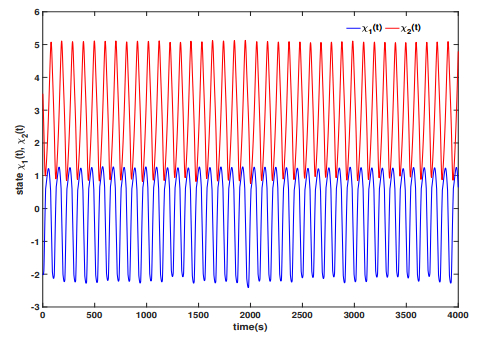

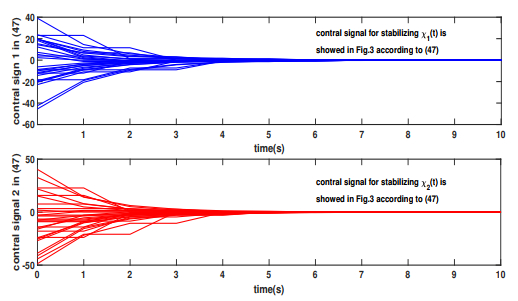
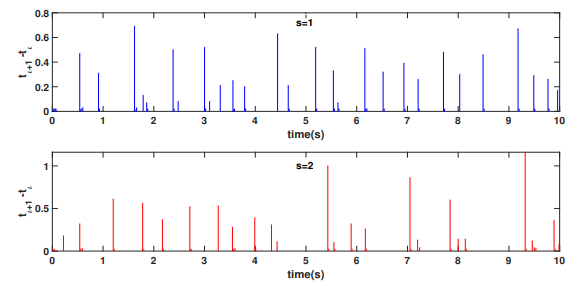
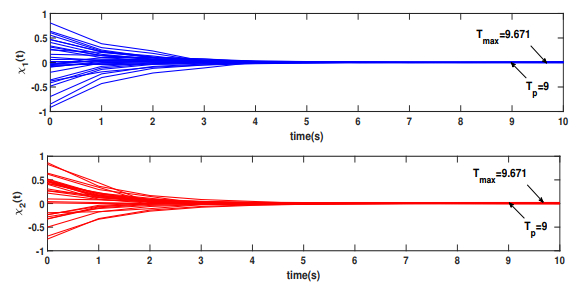
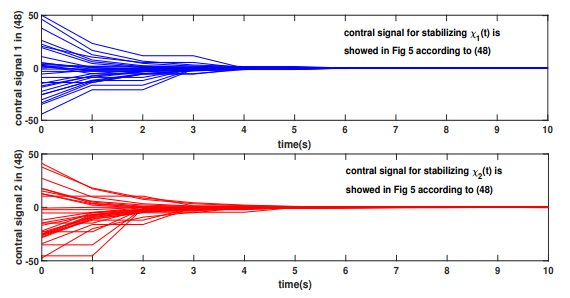
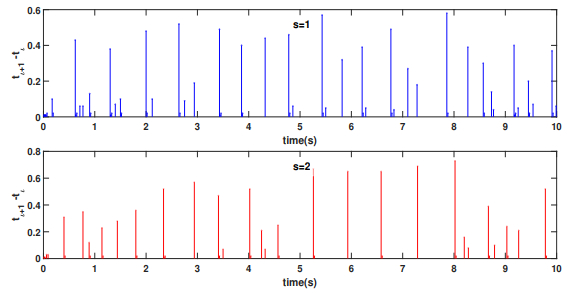


 DownLoad:
DownLoad: